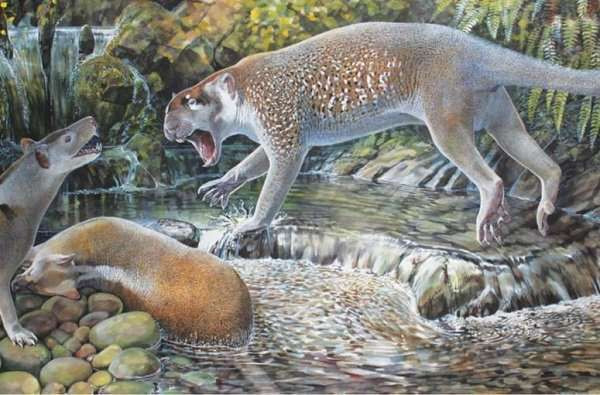Prehistoric 'Dog-Sized' Marsupial Lion Species Found in Australia

A prehistoric species of a marsupial lion was discovered by a team of researchers in Australia. The remains of the animal, estimated to have roamed the dense Australian forests about 18 to 26 million years ago, was found by University of New South Wales (UNSW) scientists in the Riversleigh World Heritage Area of remote northwestern Queensland.
The team found the animal's skull, teeth, and humerus (upper arm bone) and dated it between the late Oligocene to early Miocene era. The animal was a carnivore and the size of a large modern-day dog. This predator stalked it’s prey and roamed the rainforests some 18 to 26 million years ago. The marsupial weighed around 50 pounds (23 kilograms).
The marsupial was tiny compared to previous species of ancient marsupials discovered on the continent. The animal was just one-fifth the size of the largest and last known marsupial lion species, Thylacoleo carnifex. This carnivore (Thylacoleo carnifex) weighed around 130 kilograms. These large marsupials existed many million years after the newly discovered, smaller and older marsupial lion. The large species has been extinct for only about 30,000 years.
The Thylacoleonidae family of marsupial were categorized by their highly distinct large, blade-like, flesh-cutting premolars which were used to tear up prey.
According to a news release, this discovery follows another fossil of a kitten-sized marsupial lion which was found in the same famous fossil site in Queensland earlier this year. The UNSW scientists named that miniature predator Microleo attenboroughi after BBC’s animal documentary broadcasting legend Sir David Attenborough.
The new find has prompted the team of researchers to conclude that in the late Oligocene period, two different marsupial lion species were present in the region 25 million years ago.
The other species called the Wakaleo pitikantensis, was slightly smaller and was identified from teeth and limb bones discovered near Lake Pitikanta in South Australia in 1961.
The new findings of the small, dog-sized marsupial (Wakaleo schouteni) shows many similarities to other marsupials of the genus Wakaleo. There are many skull and dental features that the W. schouteni display that are very similar to their closest relatives.
Interestingly, the team also found structural similarities to another marsupial genus, the P. pitikantensis. The W. schouteni particularly the presence of three upper premolars and four molars which was attributed previously to the Priscileo genus. Further similarities of the teeth and humerus which are shared with W. schouteni indicate that P. pitikantensis is a species of Wakaleo.
The study also revealed that the smaller marsupial lion species showed a different dental layout compared to the larger, newer species. The W. schouteni and W. pitikantensis showed premolar and molar reduction which showed the team that they are the most primitive members of the genus.
Lead author Dr Anna Gillespie, a palaeontologist from the University of New South Wales (UNSW) in Sydney, Australia, says that the latest finding raises new questions about the evolutionary relationships of marsupial lions: "The identification of these new species have brought to light a level of marsupial lion diversity that was quite unexpected and suggest even deeper origins for the family."
The findings were published in the Journal of Systematic Palaeontology. The animal was named W. schouteni, in honor of palaeo-artist Peter Schouten.
© Copyright IBTimes 2025. All rights reserved.





















